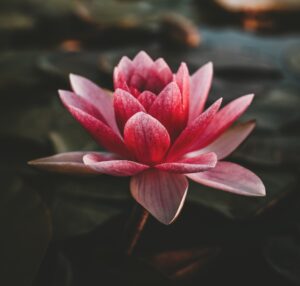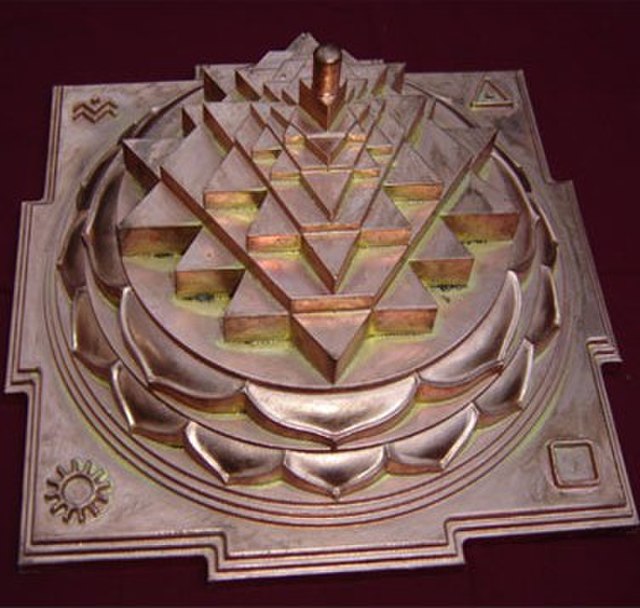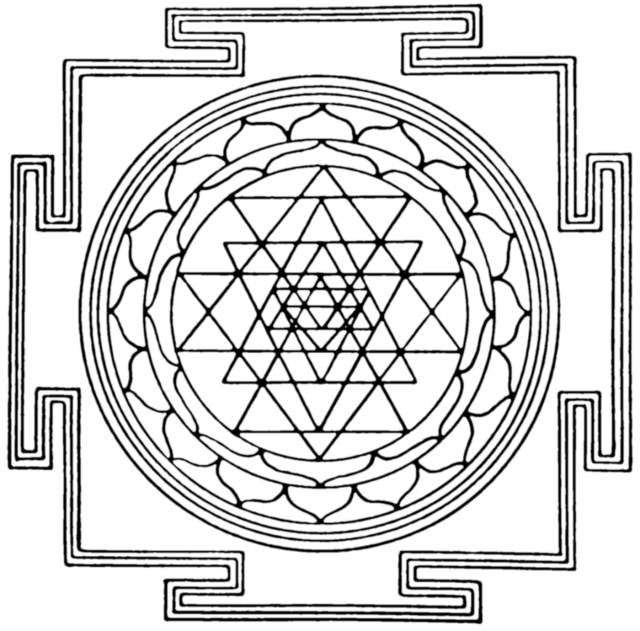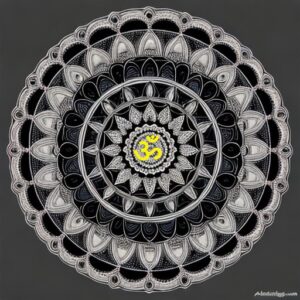Hinduism symbols form an intricate part of the spiritual fabric, offering profound insights into the cosmos and human existence. Each symbol holds a unique story, connecting spirituality with culture in ways that resonate through ages. Exploring these symbols unlocks the mysteries of ancient wisdom, allowing us to delve deep into the spiritual heritage of Hinduism. Join us on a journey of discovery, where every symbol is a key to understanding the profound tapestry of Hindu spirituality.
Unraveling the Mystique of Om (ॐ) : Exploring Hinduism Symbols

In the intricate tapestry of Hinduism symbolism, “Om” (ॐ) stands as the timeless emblem of spiritual resonance. Revered as the primal sound of the universe, it encapsulates the essence of Hindu philosophy.
The Significance of Om (ॐ): At its core, Om embodies the cosmic energy, representing the eternal cycle of creation, preservation, and destruction. It is the universal vibration that unites all living beings, reflecting the interconnectedness of the world.
Sacred Sound and Cosmic Harmony: Chanted during meditative practices and prayers, Om signifies the ultimate reality, embracing the divine within and beyond. Its three syllables, A-U-M, symbolize the states of waking, dreaming, and deep sleep, leading to enlightenment.
Om (ॐ) in Rituals and Mantras: In Hindu rituals, the chanting of Om sanctifies the atmosphere, invoking spiritual energies. It resonates within mantras, enhancing their potency, and serves as a focal point for meditation, guiding practitioners towards inner tranquility.
Spiritual Journey and Inner Awakening: For seekers, Om represents the journey from ignorance to enlightenment, guiding the soul towards self-realization. Its vibrations echo through ancient scriptures, reminding humanity of the profound wisdom encapsulated within this sacred syllable.
Cosmic Harmony of Om (ॐ): Om (ॐ), often termed the sound of creation, resonates as a profound symbol in Hinduism, bridging ancient wisdom with modern science. Scientifically, it echoes the Big Bang, the colossal explosion from which the universe sprang. Modern physics acknowledges light’s dual nature as both particle and wave, aligning with Om’s multifaceted essence.
Chanting or meditating on Om harmonizes our being with the universal vibration set in motion by the Big Bang. It’s akin to tuning our individual particles to the grand cosmic wave, the fundamental resonance of existence. By doing so, mental and physical frictions dissolve, ushering in a serene calmness. This practice essentially aligns us with the universal rhythm, connecting us to the very essence of creation.
Om signifies our interconnectedness with the universe, reminding us that we are manifestations of the same primordial energy. As we chant Om, we tap into this ancient wisdom, synchronizing our inner world with the vastness of the cosmos. In this resonance, we find liberation, a profound calmness that arises from aligning our very essence with the universal vibration that permeates the cosmos.
Embracing the Om (ॐ) Experience: To truly understand Hindu spirituality, one must embrace the profound significance of Om. It transcends language, culture, and boundaries, offering a universal path towards spiritual awakening and harmony.
Hinduism Symbols: Understanding the Swastika (卐)
The swastika is an ancient symbol that has been used in various cultures and religions for thousands of years. In Hinduism, Buddhism, and Jainism, the swastika is a sacred symbol with positive connotations, representing good luck, auspiciousness, and prosperity.
The swastika is typically depicted as a cross with arms bent at right angles, facing clockwise. Each arm of the swastika has symbolic significance:
- First Arm (Top Right): This arm represents the beginning of creation or the initial stages of the universe. It symbolizes purity, well-being, and the pursuit of enlightenment.
- Second Arm (Top Left): This arm represents preservation and the continuation of life. It signifies the preservation of positive energies and values in the universe.
- Third Arm (Bottom Right): This arm symbolizes destruction or transformation. It represents the process of breaking down old elements to make way for new beginnings and positive changes.
- Fourth Arm (Bottom Left): This arm represents creation and creativity. It symbolizes the manifestation of positive energies, growth, and the flourishing of life.

Religious Significance: In Hinduism, the Swastika holds immense religious value. It is present in various scriptures and is considered a symbol of auspiciousness, good fortune, and well-being. Its presence in Hindu rituals amplifies its significance, representing blessings and prosperity for those involved.
Its Presence in Hindu Rituals: The Swastika is an integral part of Hindu customs and traditions. It adorns homes during festivals, weddings, and religious ceremonies, signifying positive energy and invoking divine blessings. Its ubiquitous use in these contexts reflects its importance in Hindu culture.
The Swastika’s Global Misinterpretation: Unfortunately, due to its misappropriation during the 20th century, especially by extremist groups. This misuse led to widespread misunderstanding and negative connotations associated with this ancient symbol in few western countries.
Reclaiming its Spiritual Essence: Efforts to educate people about the Swastika’s true origins and spiritual significance are essential. By understanding its sacred roots, we can counter the misconceptions and promote a more respectful view of this symbol in the global community.
Embracing the Swastika: Embracing the Swastika involves acknowledging its profound spiritual depth within the Hindu faith. By appreciating its historical and cultural context, society can help preserve its genuine meaning, ensuring it continues to be a respected emblem in Hinduism’s cultural tapestry.
Hinduism Symbols: Unveiling the Lotus (पद्म)

Symbolism and Spiritual Significance: The Lotus, known as “पद्म” in Sanskrit, is a revered Hindu symbol embodying purity, enlightenment, and divine beauty. Its emergence from murky waters into exquisite bloom mirrors the soul’s journey from darkness to spiritual illumination, representing purity amid life’s challenges.
Rooted in Hindu Mythology: In Hindu mythology, deities like Brahma, Vishnu, and Lakshmi are often depicted seated on a Lotus, accentuating its divine connection. Its association with these gods enhances its sacred aura, symbolizing creation, preservation, and abundance.
The Lotus in Spiritual Practices: The Lotus holds profound importance in meditation and spiritual practices. Meditating upon the Lotus is believed to align chakras, purify thoughts, and enhance inner peace. Its presence in temples and religious ceremonies amplifies its spiritual potency.
Cultural Significance and Artistic Expression: Beyond spirituality, the Lotus pervades Hindu art, literature, and architecture. Its intricate depiction in sculptures and paintings portrays intricate craftsmanship. Moreover, its presence in Indian art signifies fertility, prosperity, and timeless elegance.
Embracing the Lotus: Appreciating the Lotus involves understanding its multifaceted symbolism. By recognizing its spiritual, cultural, and artistic significance, individuals can embrace its essence fully. Acknowledging its role in Hinduism and global spirituality promotes a harmonious coexistence of diverse beliefs.
Hinduism Symbols: The Spiritual Power of Trishul (त्रिशूल)

Symbolism and Sacred Significance: The Trishul, meaning “त्रिशूल” in Sanskrit, holds immense spiritual power in Hinduism. This iconic symbol consists of three prongs, representing Lord Shiva’s divine trident. Each prong signifies creation, preservation, and destruction—the essential cosmic cycles.
Guardian of Cosmic Balance: In Hindu mythology, the Trishul embodies Lord Shiva’s supreme authority and control over the universe. It symbolizes the balance between life, death, and rebirth, ensuring the cosmic order and harmony.
Protection and Spiritual Defense: Devotees often carry or wear the Trishul as an emblem of protection. It is believed to safeguard the bearer from negative energies, evil forces, and spiritual obstacles. Its presence creates a shield of divine energy, fostering spiritual strength and resilience.
Weapon of Transformation: Beyond its protective aspect, the Trishul represents transformation and self-realization. By meditating upon its symbolism, practitioners seek inner evolution, aiming to align with the universal consciousness and attain spiritual enlightenment.
Artistic Representation and Rituals: The Trishul’s artistic representation in Hindu temples and rituals is profound. During religious ceremonies, priests wield it as a sacred instrument, invoking divine blessings. Its artistic allure captivates devotees, inspiring awe and reverence.
Embracing the Trishul’s Wisdom: Embracing the Trishul involves recognizing its multifaceted symbolism. By understanding its spiritual, protective, and transformative significance, individuals can tap into its divine energy. Respecting its role in Hindu tradition while appreciating its universal appeal promotes cultural harmony and spiritual understanding.
Hinduism Symbols: The Mystical Sri Yantra (श्री यंत्र


Symbolic Marvel: Yantra means device the Sri Yantra, often referred to as the “King of Yantras,” is a sacred geometric pattern revered in Hinduism. Comprising nine interlocking triangles surrounding a central point, it symbolizes the divine union of masculine and feminine energies, representing the cosmic balance and harmony.
Sacred Geometry: The Sri Yantra, a revered Hindu symbol, is a complex geometric pattern. It consists of nine interlocking triangles, four pointing upward, representing the masculine energy of Shiva, and five pointing downward, symbolizing the feminine energy of Shakti. These triangles are surrounded by a lotus of eight petals, representing purity and enlightenment, enclosed within a square representing the material world.
Mystical Layers: At the heart of the Sri Yantra lies a bindu, a tiny point representing the ultimate reality, consciousness, or the cosmic center. This bindu is surrounded by two concentric circles, symbolic of manifestation and the universe. The entire structure is enclosed within a perimeter known as a bhupura, signifying the boundaries between the material and spiritual realms.
Spiritual Essence: In spiritual practices, meditating upon the Sri Yantra is believed to unlock profound energies and elevate consciousness. Devotees regard it as a powerful tool for meditation, fostering inner peace, mental clarity, and spiritual enlightenment. Its intricate geometry guides practitioners towards the ultimate reality, encouraging spiritual growth and self-realization.
Universal Harmony: Beyond its Hindu origins, the Sri Yantra transcends cultures and faiths. Its symmetrical beauty and spiritual significance captivate enthusiasts worldwide. Many believe it to be a potent symbol for manifesting desires and attracting positive energies, making it a cherished symbol in various spiritual traditions globally.
Cultural Significance: The Sri Yantra holds a central place in Hindu rituals and ceremonies, adorning temples and homes as a representation of divine blessings and prosperity. Its presence signifies auspicious beginnings and spiritual abundance, making it an integral part of religious practices and festivities.
Hinduism Symbols: The Sacred Significance of Peepal Tree (अश्वत्थ वृक्ष)

Ancient Wisdom Embodied: The Peepal tree, scientifically known as Ficus religiosa, holds immense spiritual importance in Hinduism. Revered as the Bodhi tree under which Lord Buddha attained enlightenment, it’s often considered a symbol of knowledge and wisdom. Its longevity, vast canopy, and unique heart-shaped leaves make it a symbol of eternal life and cosmic interconnectedness.
Spiritual Shelter: According to Hindu scriptures, the Peepal tree is believed to be the abode of several deities. It is under this tree that seekers meditate and gain profound insights, finding spiritual solace. Many consider it a spiritual teacher, offering shade not just from the scorching sun but also from ignorance and illusions.
Historical and Cultural Reverence: The Peepal tree finds mention in various ancient texts, linking it to spirituality and divinity. It’s common to find temples and shrines under the canopy of this sacred tree, where devotees offer prayers and perform rituals. Its association with gods and goddesses further amplifies its reverence.
Metaphorical Significance: Beyond its physical presence, the Peepal tree represents the cycle of life, death, and rebirth in Hindu philosophy. Its evergreen nature signifies the eternal truth of existence. People often circumambulate it, believing it can absolve them of sins and bless them with spiritual purity.
Environmental Guardian: Apart from its spiritual symbolism, the Peepal tree’s ecological importance cannot be overstated. It provides oxygen 24X7, purifies the air, and supports various life forms. Its deep roots stabilize the soil, preventing erosion. Thus, it embodies the harmonious relationship between humanity and nature.
A Living Symbol: The Peepal tree stands as a living testament to the rich tapestry of Hindu spirituality, offering not just shade but also profound spiritual teachings. Its timeless presence continues to inspire generations, making it a cherished emblem of Hindu symbolism.
Hinduism Symbols: Exploring the Significance of Aum (ॐ) in Mandala
A Sacred Resonance: The sacred symbol of Aum (ॐ) resonates deeply within Hinduism, embodying the essence of the universe. Enclosed within a Mandala, Aum represents the cosmic sound, the vibration from which the universe emerged. This divine syllable signifies the ultimate reality, Brahman, and is chanted during meditation, prayer, and rituals, aligning the practitioner with the cosmic energies.
Mandala: The Cosmic Diagram: A Mandala is a spiritual and ritual symbol in Hinduism, representing the universe. Mandalas often incorporate Aum at their center, signifying the core of existence. This geometric figure symbolizes wholeness and unity, serving as a visual aid for concentration, meditation, and spiritual awakening.In modern times its been cross verified with the experiment of sound with sand particles , on the vibration of Aum (ॐ) similar geometrical designs are generated .
Aum in Mandala: The Divine Nexus: When Aum is placed within a Mandala, it becomes a focal point for spiritual seekers. The harmonious integration of Aum in this intricate design signifies the interconnectedness of all life forms and the cyclical nature of the cosmos. Meditating upon Aum within a Mandala encourages profound self-discovery and spiritual enlightenment.
Mandala and Aum: A Spiritual Journey: The Aum symbol within a Mandala encapsulates the journey of the soul towards self-realization and oneness with the universe. As practitioners engage with this sacred emblem, they delve into the depths of consciousness, transcending the material world. Aum in Mandala serves as a guide, leading spiritual seekers towards enlightenment and spiritual fulfillment.
Incorporating Aum in Daily Practice: Devotees often incorporate Aum within Mandala designs in their daily rituals. By meditating upon this powerful symbol within the context of a Mandala, individuals align their energies with the cosmic forces, fostering inner peace, mental clarity, and spiritual awakening.
Aum in Mandala: A Gateway to Transcendence: Incorporating Aum within the Mandala is a testament to the profound spiritual wisdom embedded in Hindu traditions. It serves as a symbolic gateway, guiding seekers towards the transcendental realms of existence. This sacred amalgamation encapsulates the essence of Hindu spirituality, offering a transformative experience for those who explore its depths.





[…] of Aghori rituals, the utilization of human skulls as ceremonial bowls unveils a deeper spiritual symbolism. While this practice may evoke a sense of astonishment, it embodies the fundamental Aghori belief […]